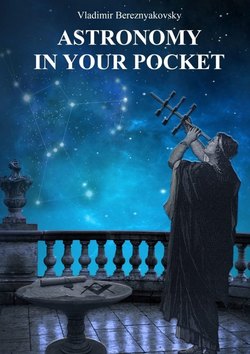Читать книгу Astronomy in your pocket - Vladimir Vladimirovich Bereznyakovsky - Страница 7
I. THE GREAT EXPLORERS
ANCIENT ASTRONOMY
ОглавлениеAncient astronomy is a very important page in the history of science, because in Ancient Greece for almost two centuries that the fundamental foundations of the universe and the structure of the Universe were laid. The mathematical methods of ancient astronomers were later used by both medieval Arabs and European astronomers.
Eudoxus was an outstanding scientist of the fourth century. He was one of the most prominent mathematicians of antiquity: he developed the General theory of proportions and became the forerunner of modern integral calculus. It is very likely that Eudoxus is responsible for the proofs given by Aristotle about the spherical shape of the Earth, and even Archimedes mentions the ratio of distances to the moon and Sun calculated by Eudoxus (1:12).
It is impossible not to say about Aristotle, whose authority in the middle Ages really held back the progress of astronomy. The theory that the Earth is the center of the Universe, to which all objects tend, was very popular and accepted as an unshakable truth. But at the same time, it is in combination with this theory that Aristotle, in his book “On the sky”, proved the spherical nature of the Earth, using as arguments eclipses of the moon and observations of the stars.
Another ancient scientist who made a huge contribution to science is Eratosthenes. For the first time, he measured the length of the earth’s circumference fairly accurately, using a homemade device called a scaphis. Eratosthenes concluded that the earth’s circumference is 39,690 kilometers. If we take into account the unreliability of the initial data and the roughness of the measuring instruments, Eratosthenes actually approached the figure of 40 thousand kilometers, equal to the circumference of the Earth.
Aristarchus of Samos, who lived in the third century BC, can rightly be called the Copernicus of the ancient world, because he was the first to propose and try to prove the heliocentric model of the Solar system. He found that the Moon revolves around the Earth, and the Earth, in addition to turning around its axis, also turns around the Sun, and this movement is characteristic of all planets. Aristarchus also stated for the first time that all the stars in the night sky are mobile, and only because of their distance do we think that they are stationary. The theory of Aristarchus could not be accepted by his contemporaries, too much would have to be changed. It was impossible for scientists to believe that the Earth was also a celestial body like Mars and Venus, because then the thousand-year-old idea of the Sky would have collapsed. Rejecting heliocentrism, the scientist’s contemporaries accused him of blasphemy and banished him from Alexandria. Almost five centuries later, Ptolemy will find arguments that refute the movement of the Earth. It will take several epochs for heliocentrism to be accepted by humans.
